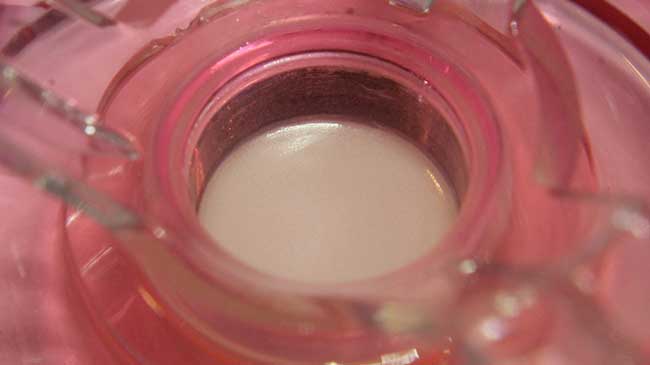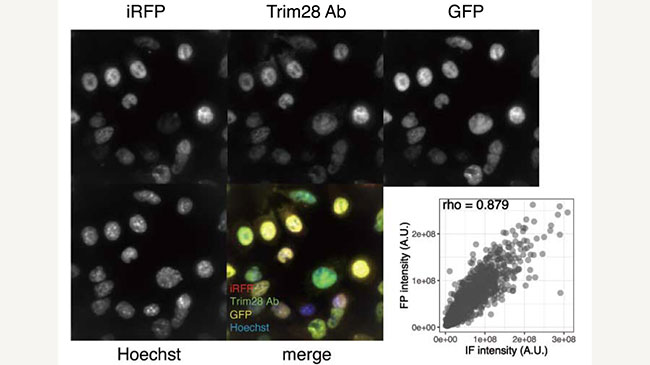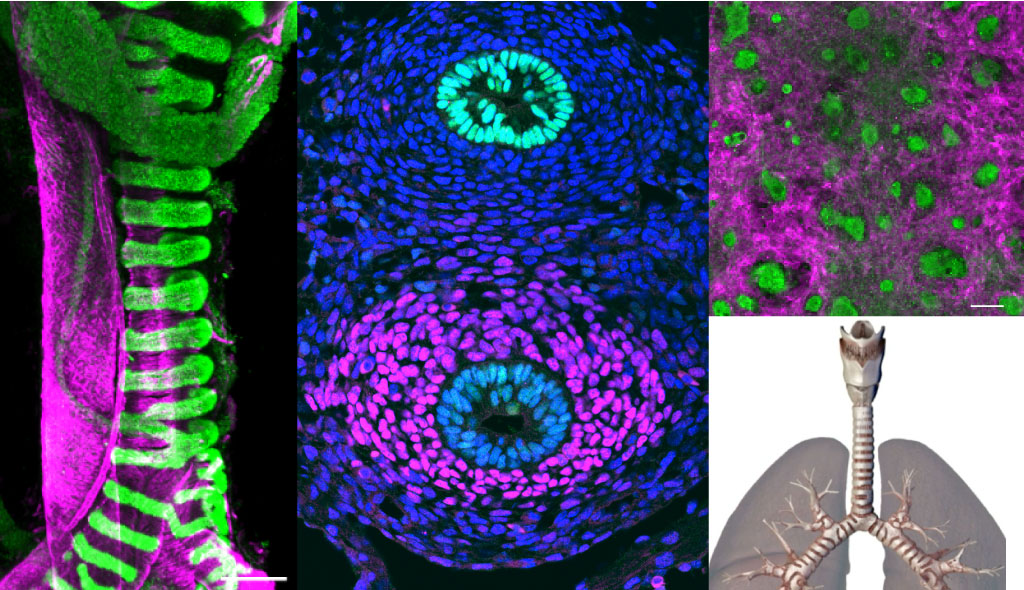2020-12-19
Research Highlights
Research highlights articles and press releases between August 2020 to November 2020
Experimental evolution reveals how bacteria gain drug resistance
Nov 24, 2020
Counteracting multidrug-resistant bacteria is becoming a critical global challenge. It seems that every time we develop new antibiotics, novel antibiotic-resistant bacteria emerge during clinical use. Tomoya Maeda and Chikara Furusawa of the Lab for Multiscale System Dynamics and their colleagues have succeeded in experimentally evolving the common bacteria Escherichia coli (E. coli) under pressure from a large number of individual antibiotics (See a movie of the fully-automated culture system). In doing so, they were able to identify the mechanisms and constraints underlying evolved drug resistance. Their findings can be used to help develop drug-treatment strategies that minimize the chance that bacteria will develop resistance. More
Maeda T, Iwasawa J, Kotani H, et al. Nat Commun 11, 5970 (2020)
Reconstructing the cellular signaling pathways that shape trachea development
Nov 13, 2020
Keishi Kishimoto and Mitsuru Morimoto of the Lab for Lung Development and Regeneration, together with Aaron Zorn’s group at Cincinnati Children’s Hospital and other colleagues, examined tracheal mesodermal development and established a protocol for inducing ES cells into the tracheal cartilage and smooth muscles (Top image). The procedure can lead to a biologically accurate organoid model that could offer both explanations and potential therapeutic options for life-threatening conditions such as malformation of the trachea. More
Kishimoto K, Furukawa KT, Luz-Madrigal A, et al. Nat Commun 11, 4159 (2020)

New artificial skin functions like natural skin
Nov 6, 2020
Our skin provides a barrier and physical cushion that protects the body from the external environment. The outer layer of the skin maintains a stable and steady tension through collagen fibers. In new work led by Takashi Tsuji (Lab for Organ Regeneration), in collaboration with ROHTO Pharmaceutical Co., Ltd., the team has developed an improved human-skin equivalent from cultured skin cells, which reproduces the tension balance of natural skin. This artificial skin will enhance in-depth analyses of physiological skin functions, provide solutions to skin problems caused by diseases or aging, and reduce the need for animal testing. More
Kimura S, Tsuchiya A, Ogawa M, et al. Commun Biol 3, 637 (2020)

Scientists identify the molecules responsible for transcriptional bursting
Sep 25, 2020
When viewing lots of cells en masse, DNA transcription seems smooth and continuous. But on a single-cell level, DNA transcription proceeds in fits and starts. This erratic nature of transcription, which is dubbed transcriptional bursting, is partly why cells with identical DNA in the same environment differ from each other. Now, by analyzing the mRNA produced by single embryonic stem cells from mice, Itoshi Nikaido and others in the Lab for Bioinformatics Research as well as collaborators at Hiroshima University have identified some of the proteins that play a key role in regulating the kinetics of transcriptional bursting. Their findings and techniques may help to establish efficient methods for inducing the differentiation of pluripotent stem cells, such as human iPS cells, into specific cell types, and to study the origin and evolution of cancer since cellular heterogeneity that is possibly caused by transcriptional bursting occurs when cancer cells grow in the body. More
Ochiai H, Hayashi T, Umeda M, et al. Sci Adv 6, eaaz6699 (2020)
Coordination of hormonal signaling and nutrient metabolism drives critical life-cycle transition
Sep 18, 2020
Steroid hormones regulate many developmental transitions in animals, from metamorphosis in insects to puberty in people. Yet the compounds that determine the energy metabolism in these biological events have long been overlooked. Now, BDR’s Takashi Nishimura (former Lab for Growth Control Signaling) has discovered how steroid hormone signaling regulates glucose metabolism to drive the transition from larvae to pupal stages in the fruit fly. His work could have much wider implications that may extend to life-stage changes in people. More
Nishimura T. Curr Biol 30, 3624-3632.e5 (2020)
Humans develop more slowly than mice because our chemistry is different
Sep 18, 2020
In the early stages of vertebrate development, the embryo develops into a series of “segments” that eventually differentiate into different types of tissues such as muscles or ribs. This process is known to be governed by an oscillating biochemical process known as the “segmentation clock”. Mitsuhiro Matsuda and Miki Ebisuya of the former Lab for Reconstitutive Developmental Biology, now both at European Molecular Biology Laboratory (EMBL) Barcelona, and their colleagues have found that this segmentation clock progresses more slowly in humans than in mice because the biochemical reactions are slower in human cells. The differences in the speeds of biochemical reactions may underlie differences between species in the tempo of development. More
Matsuda M, Hayashi H, Garcia-Ojalvo J, et al. Science 369, 1450-1455 (2020)

A neural circuit that makes rodents go into a hibernation-like state found
Aug 28, 2020
Many mammals, from hamsters to bears, survive the harsh temperatures and food scarcity of winters by hibernating. Hibernation is essentially an energy-saving mode since it lowers the metabolic rate, allowing an animal to expend much less energy than normal. BDR’s Genshiro Sunagawa and Prof. Takeshi Sakurai’s group at the University of Tsukuba have found that activating a certain brain circuit causes mice and rats—non-hibernating animals—to enter a hibernation-like state. This finding could have implications for other non-hibernating mammals, including humans, and it might eventually find application in space travel and the transportation of seriously injured patients. More
Takahashi TM, Sunagawa GA, Soya S, et al. Nature 583, 109-114 (2020)
